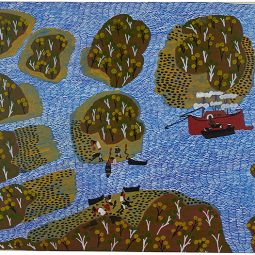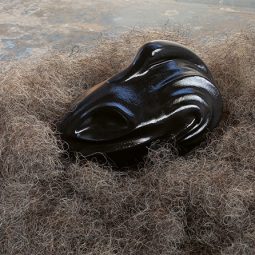“I always intended to be an artist. . . ”
“I always intended to be an artist: my earliest memory is of standing in my cot and drawing on the wall with my mother’s lipstick, and being surprised at my parents’ reaction.” We can all be pleased – however dismayed they were at the state of the wall and the lipstick – that her parents’ response did not deter Margaret Ackland’s ambition. Instead, when she was about to leave school and wanted to train in art, her father took her to meet a friend’s brother, the sculptor Tom Bass – who not only confirmed she had ability, but happily added that whatever the outcome, art school would be a wonderful experience.
Ackland embarked on her studies at Tech, before moving onto the National Art School in Sydney, giving her the rigorous formal training needed for the glorious watercolours shown in her upcoming exhibition at Stanley Street Gallery, Sydney. After her studies followed a common pattern for women growing up in a post-WWII era: she married, and received a Diploma of Education which allowed her to teach. Quickly followed by the births of her two children.
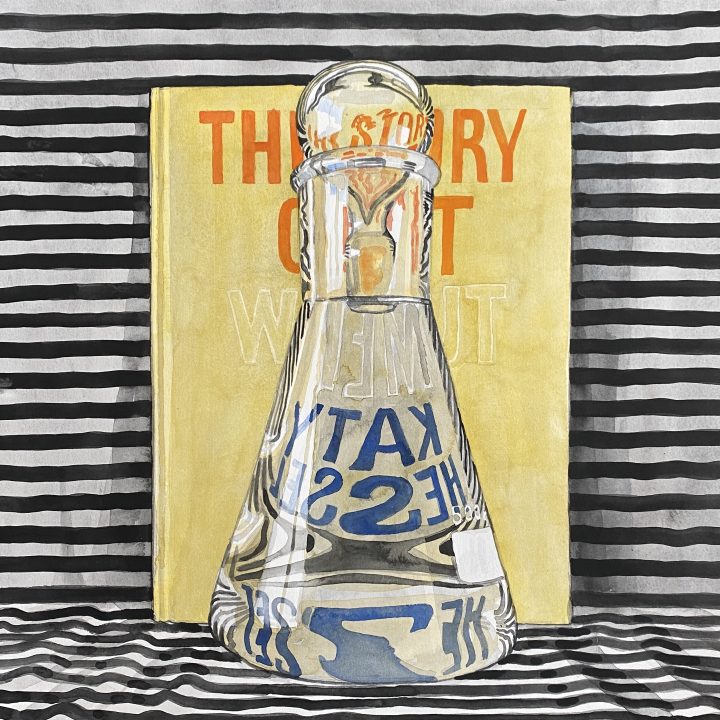
Hide, 2023, watercolour on paper, 48 × 48cm. Photograph: Ian Hobbs
Courtesy the artist, Flinders Lane Gallery, Melbourne and Stanley Street Gallery, Sydney
Putting a pause on teaching, Ackland later found painting again, and on meeting the poet Les Murray at dinner, she asked to paint him. The portrait was exhibited in the Archibald. She then won The Sydney Morning Herald Travelling Scholarship. Ackland was told that with one child she might be accepted for a studio at, for example, the Cité des Arts in Paris, but that two would not be acceptable, so she and the family travelled about so Ackland could visit galleries. While she was away her first exhibition took place in Sydney, and this too reflects change in the artworld . . . “you wouldn’t do that now.”
She’s quite right. The artworld – the world, indeed – has utterly changed. Children welcome. Images by electronic transfer instead of travel. Art made to fashion, for investment, rather than pleasure or an exploration of ideas. But her approach has not changed; she remains the essential artist. After those years of training came work. Work refined the hand-eye link that allows creativity to meet information and skill. Responding with calm, intelligent action to what her eye sees, Ackland paints remarkable pictures.
Remarkable for their vivacious colour against patterned black and white – suggesting wallpaper, because the imagery is immediately domestic – glass vases of flowers: giant vases of giant flowers, the water distortion rendered in a manner as accomplished as any fifteenth century still life. In one, the background pattern includes fighter jets and refugees – “the Ukraine war started as I began to paint them.”
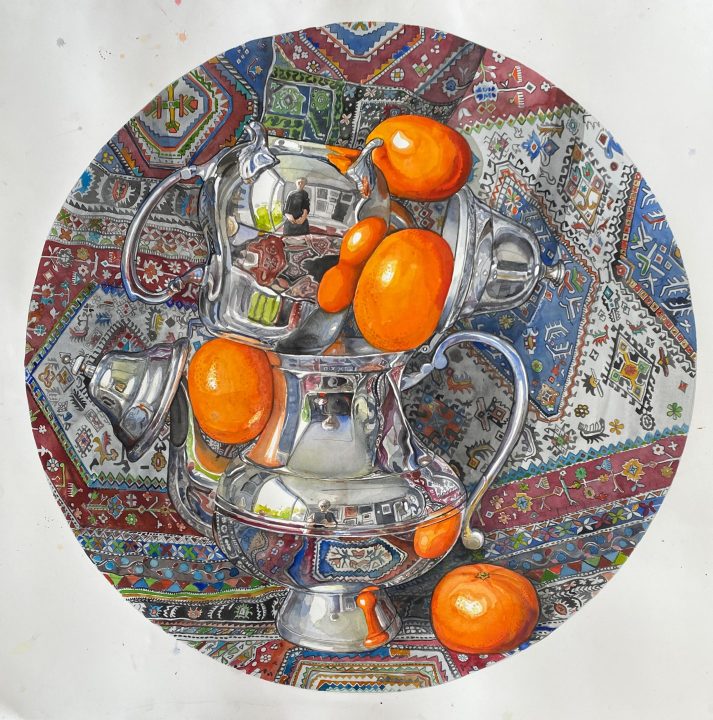
Flow, 2023, watercolour on paper, 90cm diameter. Photograph: Ian Hobbs
Courtesy the artist, Flinders Lane Gallery, Melbourne and Stanley Street Gallery, Sydney
The images are bold, delicately executed. Highly polished pieces of household silver: jug, teapot, coffee pot, but balanced on each other, tiny images reflecting the artist and surrounds. Think van Eyck’s Arnolfini. Artists look to art, not fashion. When Ackland trained, watercolour was derided, realism was passé. Sophisticated, blazing with colour, ironic, remembering history and noting the present, reflecting lived experience with grace, these pictures laugh at those ideas.
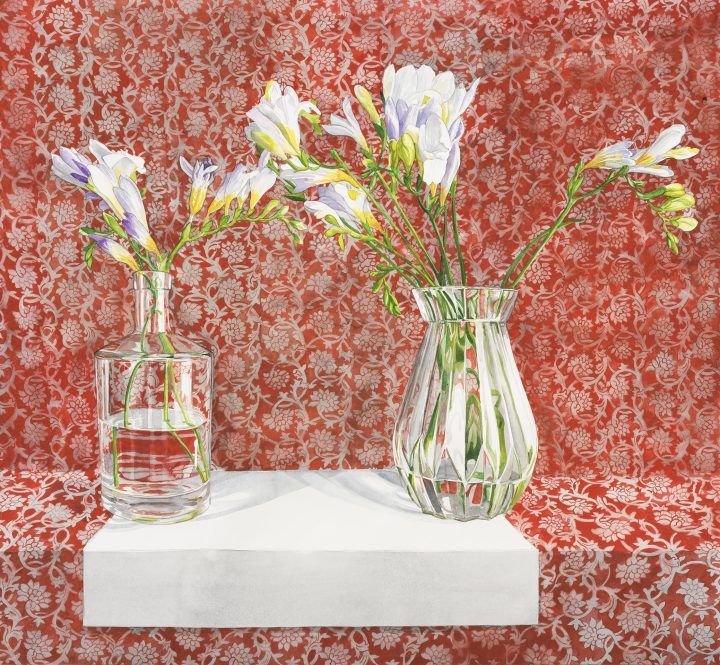
Bridge, 2023, watercolour on paper, 97 × 104cm. Photograph: Ian Hobbs
Courtesy the artist, Flinders Lane Gallery, Melbourne and Stanley Street Gallery, Sydney
Margaret Ackland’s exhibition Tipping Point is on view at Stanley Street Gallery, Sydney, from 9 August to 2 September 2023.
Dr Judith Pugh is an arts and cultural writer based on Wangal land in Ashfield, Sydney.

